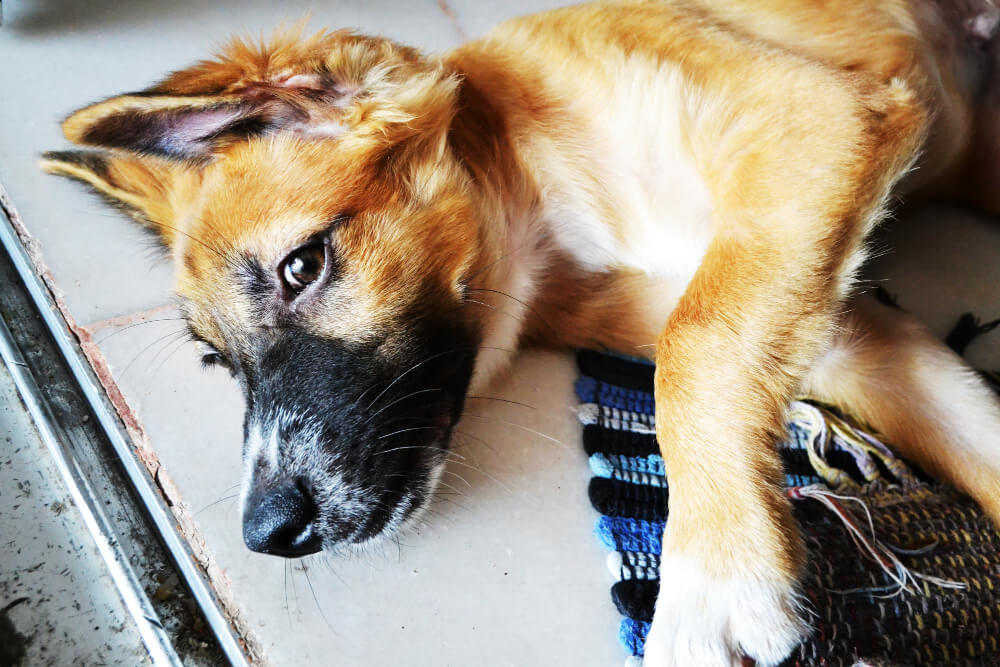Cushing’s disease, also known as hyperadrenocorticism, is a condition that affects a dog’s adrenal glands, leading to excessive production of cortisol. While it might sound alarming, early detection and proper care can greatly improve your dog’s quality of life. In this article, we’ll dive into the early signs of Cushing’s disease and how to spot them so you can act quickly.

What Exactly Is Cushing’s Disease?
Cushing’s disease occurs when a dog’s adrenal glands, located near their kidneys, produce too much cortisol. Cortisol is a vital hormone that helps regulate various functions, including metabolism and immune response. However, excessive levels can lead to a range of health issues.
There are two primary types of Cushing’s disease:
- Pituitary-Dependent Cushing’s: Caused by a small tumor in the pituitary gland, this is the most common type.
- Adrenal-Dependent Cushing’s: Caused by a tumor on one of the adrenal glands.
Why Is Early Detection Important?
Early detection is crucial because it allows your veterinarian to begin treatment before the disease progresses and leads to severe complications. Untreated Cushing’s can cause issues like diabetes, kidney problems, or weakened immunity.
Early Signs to Watch Out For
Increased Thirst and Urination
One of the first and most noticeable signs is your dog drinking more water than usual. This leads to frequent urination, and you might find yourself refilling their water bowl more often or cleaning up accidents indoors.
Increased Appetite
Has your dog suddenly turned into a bottomless pit when it comes to food? A heightened appetite is another common early symptom. They may start begging more or even steal food off the counter.
Pot-Bellied Appearance
A bloated or round belly is an early physical sign of Cushing’s disease. This happens due to fat redistribution and weakened abdominal muscles.
Behavioral Changes You Shouldn’t Ignore
Lethargy and Reduced Activity
If your once-active pup seems tired or uninterested in playtime, it could be an early sign of Cushing’s. The disease can make dogs feel fatigued and less eager to move around.
Excessive Panting
Dogs with Cushing’s often pant even when they’re not overheated or stressed. If you notice this happening frequently, it’s worth a mention to your vet.
Skin and Coat Changes
Thinning Fur or Hair Loss
Your dog’s coat may start to thin, especially along their back, neck, and tail. Unlike normal shedding, this hair loss can appear patchy.
Thin or Fragile Skin
Dogs with Cushing’s may develop skin that feels thin or tears easily. This can lead to cuts, bruises, or infections, even from minor injuries.
Recurring Skin Infections
If your dog seems to have constant skin issues like infections or hot spots, it could be related to their cortisol levels.

When to See a Vet
If you notice one or more of these signs, it’s time to schedule a vet visit. The earlier the diagnosis, the better your dog’s chances of managing the disease effectively. Your vet may run a series of tests, including blood work and imaging, to confirm Cushing’s and identify its type.
How Is Cushing’s Disease Treated?
Treatment options depend on the type of Cushing’s disease:
- Medication: Drugs like trilostane help regulate cortisol levels.
- Surgery: In cases of adrenal tumors, surgical removal may be recommended.
- Lifestyle Adjustments: A balanced diet, regular exercise, and monitoring are crucial for long-term management.
Final Thoughts
Recognizing the early signs of Cushing’s disease in dogs can make a world of difference. While the symptoms might seem subtle at first, staying vigilant and acting quickly can ensure your furry friend gets the care they need. Remember, you know your dog best—if something feels off, don’t hesitate to consult your vet.
Your pup depends on you to be their health advocate, and catching these signs early is the first step in keeping their tail wagging for years to come.
For more insights into your dog’s health and happiness, visit DogTalkBoy—where we talk all things canine!








